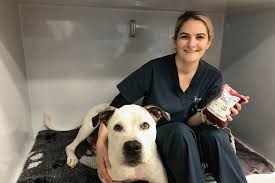Syllabus:
GS-3: Issues related to direct and indirect farm subsidies and minimum support prices; Public Distribution System- objectives, functioning, limitations, revamping; issues of buffer stocks and food security; Technology missions; economics of animal-rearing.
Context:
The Department of Animal Husbandry and Dairying, under the Ministry of Fisheries, Animal Husbandry and Dairying, released India’s first-ever Guidelines and Standard Operating Procedures (SOPs) for Blood Transfusion and Blood Banks for Animals.
About Guidelines
- This first-of-its-kind national framework provides a structured, ethical, and modern foundation for animal blood transfusion and blood banking in India—saving animal lives, safeguarding farmer livelihoods, and advancing animal welfare.
- It is advisory and non-statutory, framework guiding institutions and practitioners. It is a dynamic document that will evolve with new science, field experience, and stakeholder feedback.
- The guidelines establish a structured framework for veterinary transfusion medicine in India, addressing the earlier practice of emergency-based transfusions without standardized donor screening, blood typing, or storage protocols.
Key Objectives
- Standardizing donor selection, blood collection, storage, and transfusion protocols.
- Ensuring donor animal welfare and ethical safeguards.
- Integrating One Health principles to reduce zoonotic risks.
- Laying the foundation for a national veterinary blood bank network.
- Supporting veterinary education, training, and research.
Livestock Population
- India is home to one of the world’s largest and most diverse animal populations, with over 537 million livestock and more than 125 million companion animals.
- The livestock sector alone contributes 5.5% to national GDP and over 30% to agricultural GDP, playing a critical role in food security, rural livelihoods, and public health.
Key Guidelines
The new guidelines establish a comprehensive system covering donor selection, blood collection, component processing, storage, transfusion procedures, monitoring, and safety safeguards.
- Establishment of state-regulated veterinary blood banks with biosafety standards.
- Mandatory blood typing and cross-matching to prevent incompatibility.
- Donor eligibility norms such as age, weight, vaccination, disease screening and donation intervals.
- Ethical framework emphasising voluntary, non-remunerated donations and informed consent.
- SOPs for transfusion monitoring, adverse reaction management, and record-keeping.
- Introduction of a National Veterinary Blood Bank Network (N-VBBN) with digital Registries, real-time inventory and an emergency helpline.
Towards Advanced Transfusion
The guidelines envision:
- Mobile blood collection units for rural and underserved areas.
- Cryopreservation & biobanking for rare blood types.
- Mobile apps for donor-recipient matching and inventory dashboards.
- Expanded training for veterinarians and para-veterinarians.
- Continued research into advanced transfusion technologies.
Beneficiaries
- Animals: Safer, life-saving transfusion support in emergencies and critical care
- Veterinarians: Structured protocols and reference material for clinical practice
- Farmers: Healthier livestock, reduced mortality, and protection of livelihoods
- Society: Improved animal welfare and stronger food security
Prevention of Cruelty to Animals Act, 1960: Ensuring blood donation and transfusion procedures are performed without causing unnecessary pain or suffering to animals.
- Ensures donor animal welfare, humane handling, voluntary non-remunerated donation, and post-donation care.
- Blood collection and transfusion must comply with ethical norms defined under this Act.
Indian Veterinary Council Act, 1984: It regulates veterinary practice and mandates that animal blood transfusions be supervised by qualified veterinarians.
- Provides regulatory authority to the Veterinary Council of India (VCI) and State Veterinary Councils to oversee clinical veterinary practices.
Biomedical Waste Management Rules, 2016: It specifies the safe disposal of biomedical waste generated during the collection, processing, and transfusion of animal blood, in compliance with the provisions of the Environment (Protection) Act, 1986.

